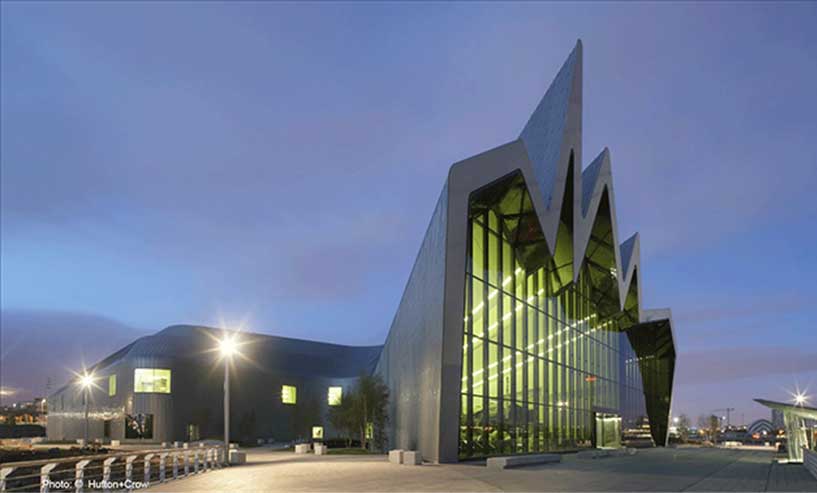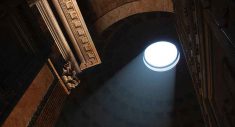Galaxy SOHO, Beijing, China – 2012
Galaxy SOHO is a large development in central Beijing comprising a compelling mix of 161,000sqm of offices and 90,000sqm of retail and entrainment spaces.
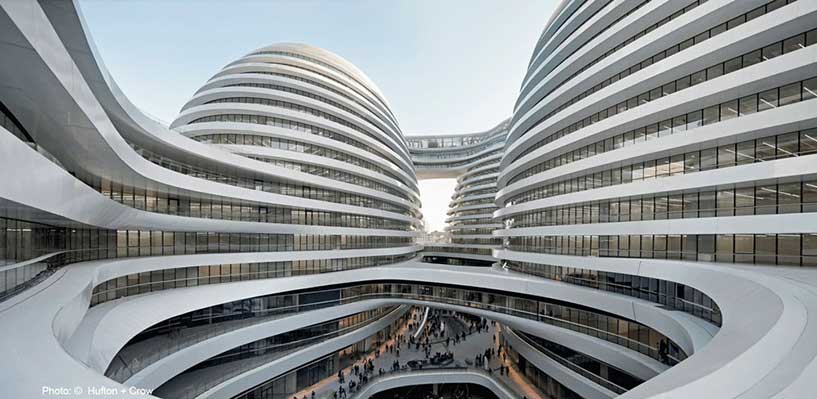
With its four continuous and flowing volumes merged to create an internal world of continuous open spaces, Zaha re-invents the classical Chinese courtyard while establishing a striking and monumental presence along Beijing’s East 2nd Ring Road. Since its inception, a number of green building strategies were incorporated into the design such as highly efficient lighting fixtures, chillers with low GWP and zero ODP refrigerants, double silver low-E glazing, greywater recycling system, water efficient fixtures and cooled roof finishes (high Solar reflectance index – SRI), etc. The building is expected to achieve LEED certification.
MAXXI Museum of XXI Century Art, Rome, Italy – 2009
Following a two-part international competition, the Zaha Hadid’s proposal for the building devoted to the national centre for the contemporary art and architecture was chosen from among 273 candidates from all over the world.
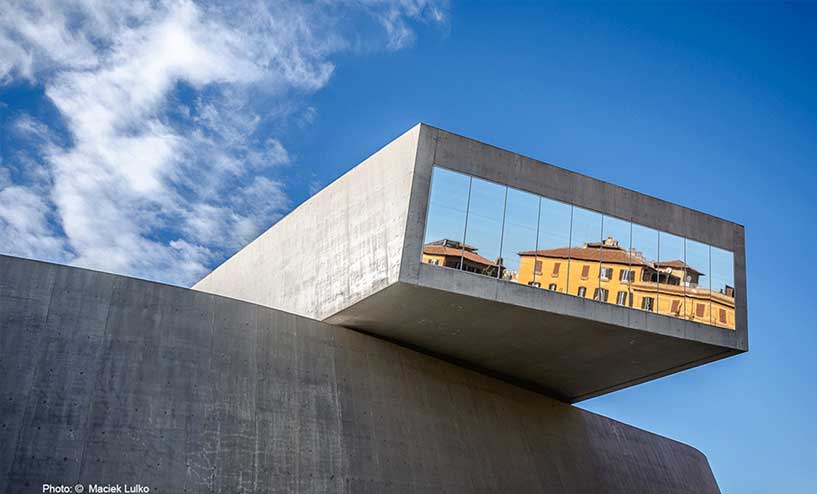
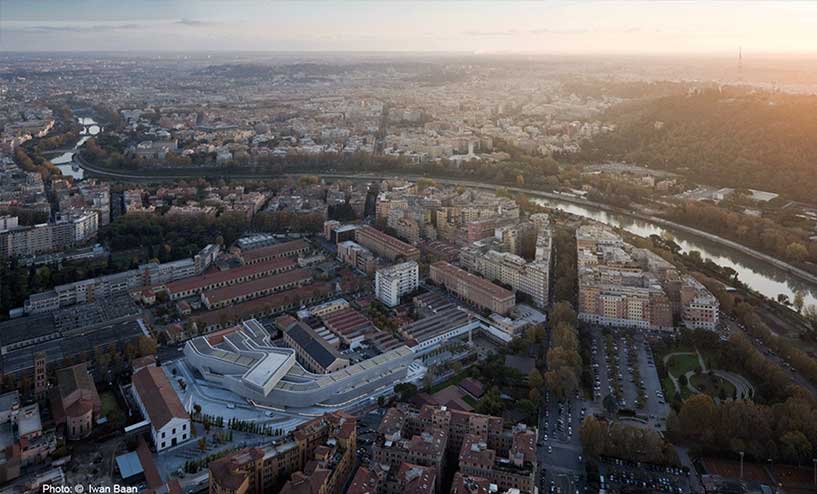
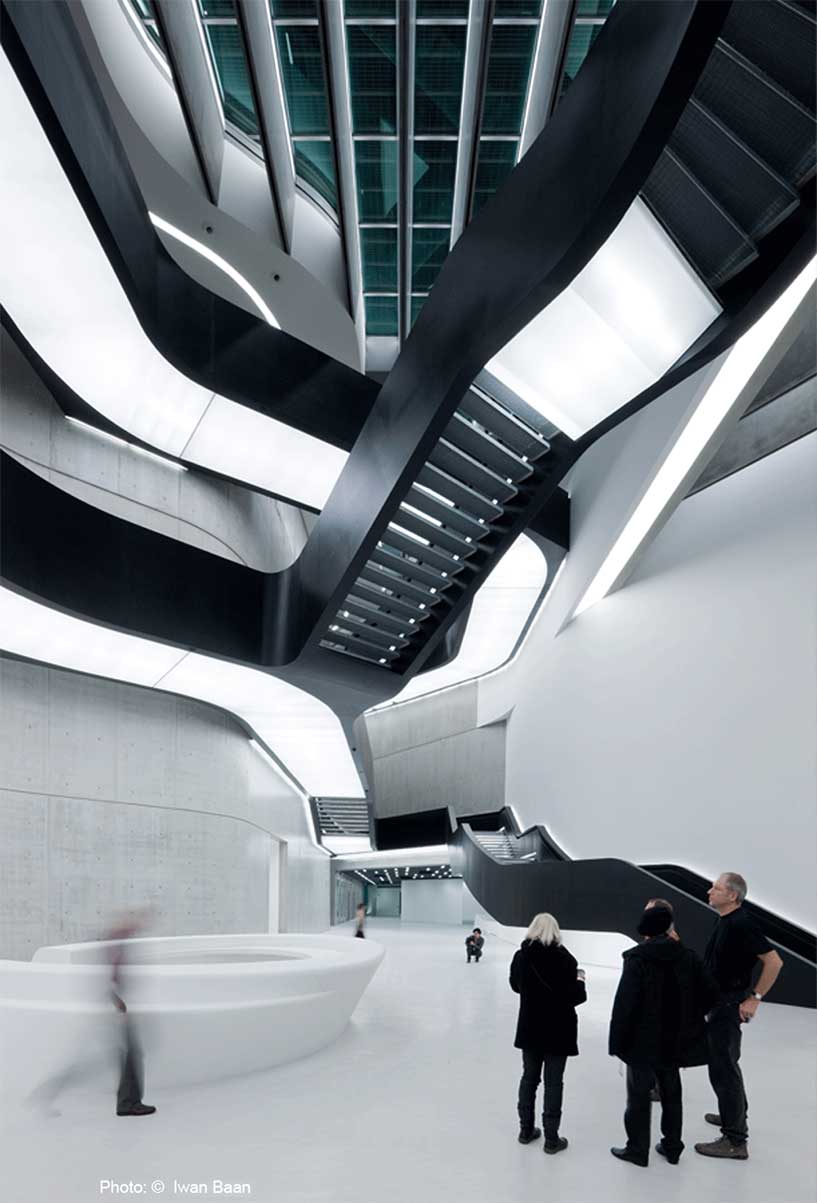
The MAXXI goes definitely beyond the concept of the building-museum. With a capacity to successfully integrate with the urban fabric and for its innovative architecture, the building provides an extraordinary sequence of complex public spaces and volumes identified by the variations and intersections of curving walls and floor levels which determine a very rich spatial and functional configuration that visitors may pass through via ever different and unexpected routes.
A large full height atrium houses the reception services and leads into the auditorium, the galleries destined for the permanent collections, the exhibitions and the spaces devoted to the cafeteria and the bookshop.
Messner Mountain Museum, Kronplatz mountain, Plan de Corones, South Tyrol, Italy – 2015
The sixth and final museum of the Messner Mountain Museum network, the MMM Corones is embedded within the summit of Mont Kronplatz, 2,275m above sea level at the centre South Tyrol’s most popular ski resort. Opened in July 2015, the 1,000 square metres museum is a modern structure designed to feature a permanent exhibition dedicated to traditions, history and discipline of mountaineering. The building’s annual CO2 emissions are approx. 15kg/m2.
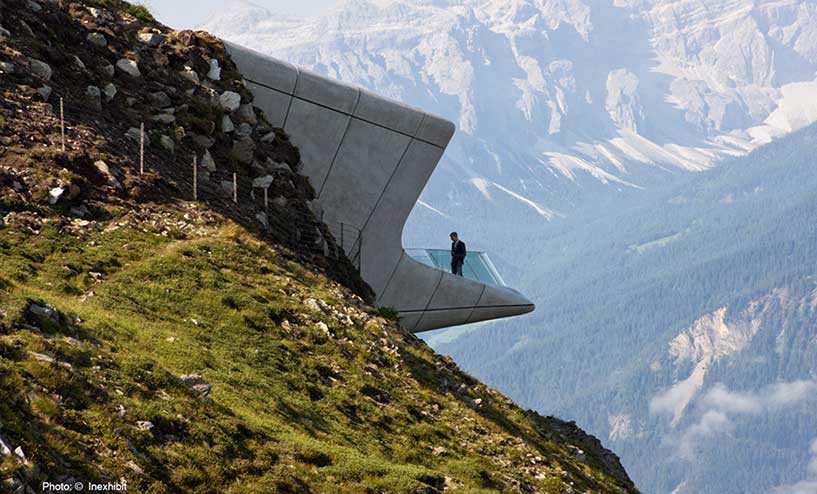
London Aquatics Centre, London, United Kingdom – 2011
The concept for the London Aquatics Centre was inspired by the fluid geometry of water in motion, creating spaces and a surrounding environment in sympathy with the river landscape of the Olympic Parl. The building was designed to accommodate the London 2012 Olympic Games whilst also providing the optimum size and capacity for use in legacy after the games. An undulating roof, with a double-curvature geometry sweeps up from the ground as a wave, creating a structure of parabolic arches to enclose the volume of the swimming and diving pools with its unifying gesture.
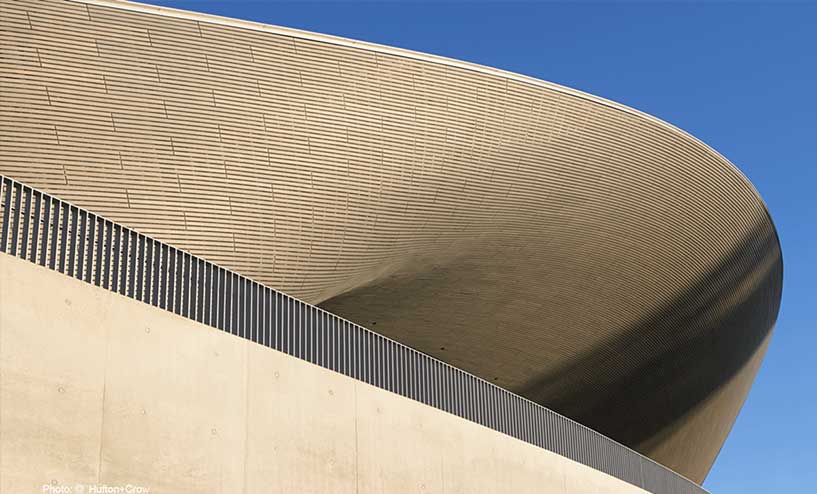
The London Aquatics Centre was designed incorporating sustainability into the building rather than bolting it on at the end, with long-term community use in mind. The building was awarded BREEAM excellent certification.
Heydar Aliyev Center, Baku, Azerbaijan – 2012
Since its independence, in 1991, the Azerbaijan has heavily invested in modernizing and developing Baku’s infrastructure and architecture, departing from its legacy of normative Soviet Modernism. Zaha Hadid was appointed to design the Heydar Aliyev Center following a competition in 2007. With a single continuous fluid surface, the 57,500sqm Heydar Aliyev Center emerges from the landscape’s natural topography by the wrapping of individual functions of the Center: a conference hall (auditorium), a gallery hall and a museum. Since its opening, in 2012, the building has become a signature landmark of modern Baku due to its cutting-edge design. The Heydar Aliyev Center was nominated for awards in 2013 at both the World Architecture Festival and the biennial Inside Festival.
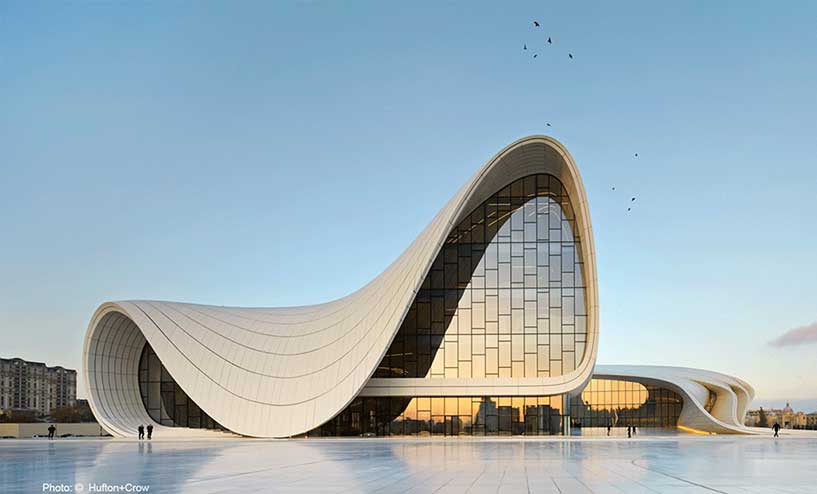
Vitra Fire Station, Weil am Rhein, Germany – 1993
The Fire Station is the very first building complex designed by Zaha Hadid. Cast in concrete on site and conceived as the end-note to existing factory buildings of the Vitra Campus, the sculpture-like building defines rather than occupies space – emerging as a linear, layered series of walls, between which program elements are contained – with an effect of a frozen explosion. Its lack of colour and right angles provides visitors with an unusual spatial experience.
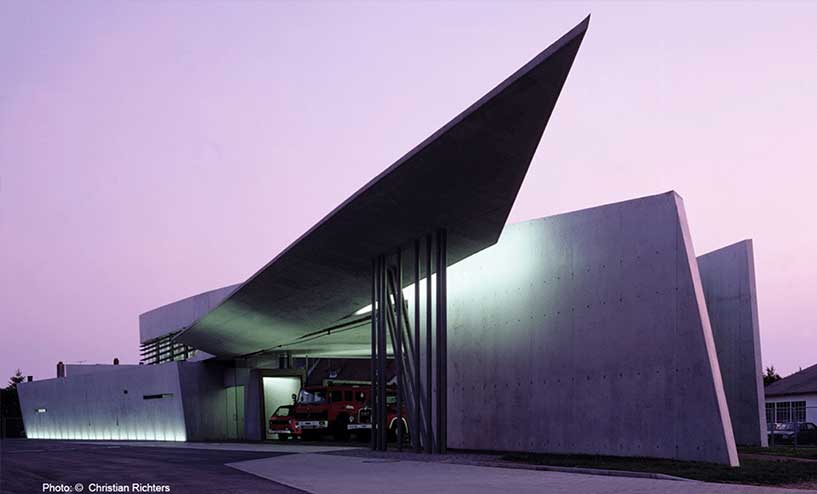
BMW Central Building, Leipzig, Germany – 2005
Zaha Hadid’s new 27,500sqm Central Building for BMW radically re-interprets the traditional office and industrial workplace transforming the building and the functions it contains into a more dynamic, active nerve-centre or communication knot of the BMW factory complex. All movement around the manufacturing complex are funnelled through a space that transcends conventional white collar/blue collar spatial divisions.
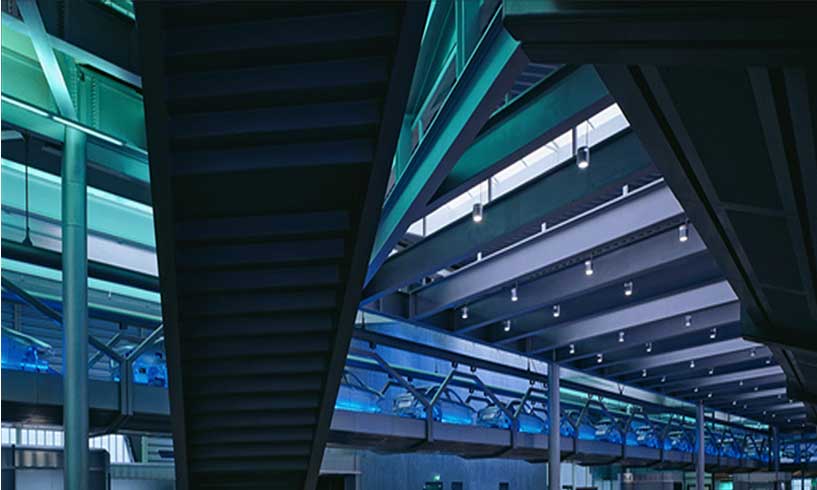
Dongdaemun Design Plaza, Seoul, South Korea – 2013
The 86,574sqm DDP is a major urban development landmark in Seoul, designed as a cultural hub at the centre hub at the centre of Dongdaemun, an historic district of Seoul that is now renowned for its 24-hour shopping and cafes. With its “curving forms of elongated structures” comprises a variety of spaces such as art and exhibition halls, conference hall, design museum, design labs and academy hall, media centre, seminar rooms and a design market open 24 hours a day. The DDP was the first public project in Korea to adopt the BIM (Building Information Modelling) technology during its construction.
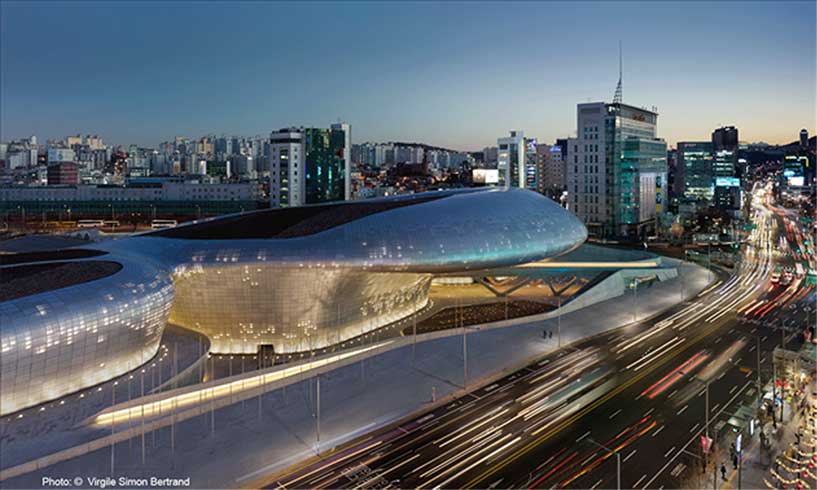
Guagzhou Opera House, Guangzhou, China – 2010
Like two pebbles in a stream smoothed by erosion, the Guangzhou Opera House sits in perfect harmony with its riverside location. At the heart of Guangzhou’s cultural sites development, the 70,000sqm building comprises a 1,800-seat theatre plus 400-seat multifunctional hall, rehearsal rooms and entrance hall.
By engaging with the principles of erosion, geology and topography, dramatic interior and exterior canyons for circulation, lobbies and cafes are created by folding lines and glass-fibre reinforced gypsum panels. Natural light penetrates deep into the building carving fluid and seamlessness habitable spaces. The Guangzhou Opera House acts like a catalyst for the development of cultural facilities in the city including new museums, library and archive.
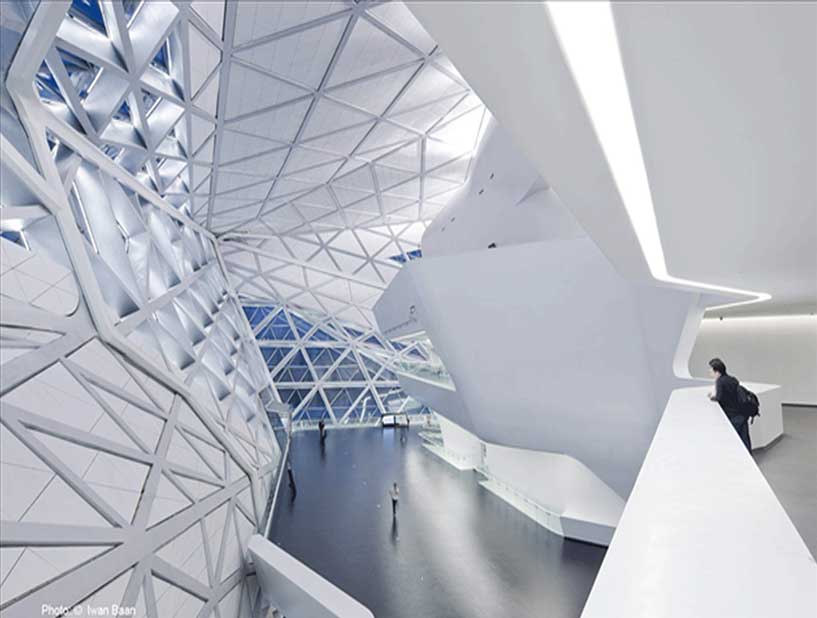
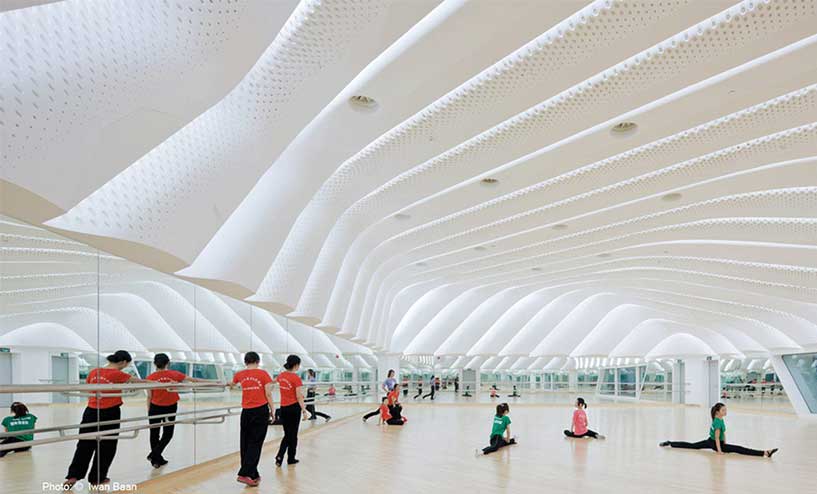
Glasgow Riverside Museum, Glasgow, United Kingdom – 2011
The the stunning Glasgow Riverside Museum of Transport is a column-free extrusion open at both ends, wich acts like a ‘flowing’ building connecting the city and the river. With its eye-catching ‘zig-zagging’ zinc roof shape, the 11,000sqm museum, which has been dubbed ‘Glasgow’s Guggenheim’, symbolises dynamic relationship between Glasgow and the ship-building, seafaring and industrial legacy of the river Clyde.
